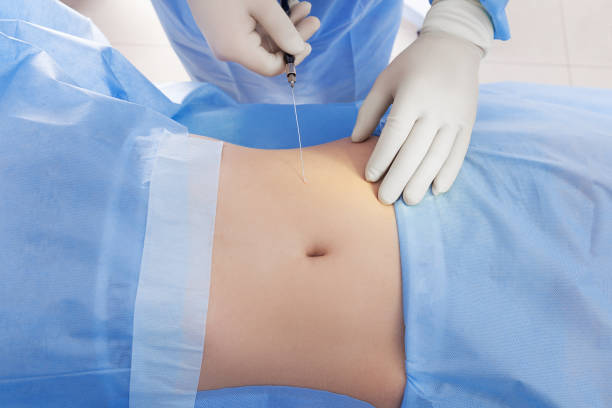Lipolysis is the process of breaking down triglycerides (fats) into their component molecules, which are glycerol and fatty acids. This process involves several steps, which can be summarized as follows:
- Hormonal Stimulation: Lipolysis is primarily regulated by hormones such as epinephrine (adrenaline), norepinephrine, and glucagon. These hormones activate lipolysis by binding to specific receptors on fat cells (adipocytes).
- Activation of Adenylate Cyclase: Hormonal stimulation leads to the activation of an enzyme called adenylate cyclase, which converts ATP (adenosine triphosphate) into cyclic AMP (cAMP).
- Activation of Protein Kinase A (PKA): cAMP activates protein kinase A (PKA), which is an enzyme that plays a central role in the regulation of lipolysis.
- Activation of Hormone-Sensitive Lipase (HSL): PKA phosphorylates and activates hormone-sensitive lipase (HSL), which is located on the surface of fat droplets within adipocytes.
- Breakdown of Triglycerides: Activated HSL catalyzes the hydrolysis of triglycerides into glycerol and fatty acids. This is the main step in lipolysis.
- Release of Glycerol and Fatty Acids: Glycerol and fatty acids are released into the bloodstream, where they can be transported to other tissues for energy production or storage.
So, there are several steps involved in the process of lipolysis, with the breakdown of triglycerides by hormone-sensitive lipase being the central and most critical step in the process. The regulation of lipolysis is a complex process involving multiple enzymes and hormonal signals.

Is lipolysis a metabolic process?
Yes, lipolysis is indeed a metabolic process. Metabolism refers to the chemical reactions that occur within living organisms to maintain life and support various cellular functions. Lipolysis is a specific metabolic process that involves the breakdown of triglycerides (fats) into their constituent molecules, which are glycerol and fatty acids.
This process is crucial for the regulation of energy balance in the body. When the body needs energy, lipolysis is activated to release stored fat from adipose tissue, and the resulting glycerol and fatty acids can be used as an energy source by various tissues and organs. Lipolysis plays a central role in the regulation of lipid metabolism and energy utilization in the body.
Can lipolysis and lipogenesis occur at the same time?
Lipolysis and lipogenesis are opposing metabolic processes that regulate the storage and release of fats in the body. While they can occur simultaneously to some extent, the overall balance between the two processes depends on various factors, including hormonal and nutritional conditions.
Lipolysis: As mentioned earlier, lipolysis is the process of breaking down triglycerides (fats) into glycerol and fatty acids, which can then be used as an energy source by the body. It is typically activated when the body needs energy, especially during periods of fasting, exercise, or stress.
Lipogenesis: Lipogenesis, on the other hand, is the process of synthesizing triglycerides (fats) from glycerol and fatty acids. This process occurs primarily in response to excess energy intake when there is an abundance of dietary calories. Excess carbohydrates and dietary fat can be converted into stored fat through lipogenesis for future energy use.
In a dynamic and healthy metabolic state, the body regulates these processes to maintain energy balance. Here are a few scenarios to consider:
- During periods of excess calorie intake, lipogenesis predominates, leading to fat storage.
- During periods of calorie deficit (e.g., fasting or increased physical activity), lipolysis is upregulated, leading to the breakdown of stored fat for energy.
- In some situations, such as during moderate physical activity after a meal, both lipolysis and lipogenesis may occur simultaneously to some degree, but the net effect depends on various factors, including the energy needs of the body and the hormonal milieu.
Ultimately, the balance between lipolysis and lipogenesis is tightly regulated by hormones, such as insulin, glucagon, and others, as well as nutritional factors. In conditions of chronic imbalance, such as excessive calorie intake and sedentary lifestyle, lipogenesis may outweigh lipolysis, leading to weight gain and fat accumulation.
